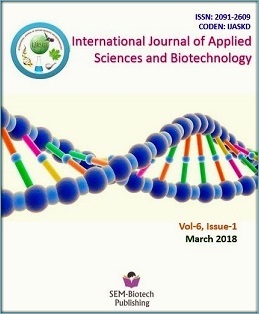Technology of Microbial Electrolysis Cell with Statistical Optimization by Response Surface Methodology for Bio-Hydrogen Production and Phosphorus Recovery
DOI:
https://doi.org/10.3126/ijasbt.v6i1.19468Keywords:
Bio-hydrogen, Phosphorus, Struvite, Microbial electrolysis cell, Statistical optimization, Response surface methodologyAbstract
In this study, two chamber microbial electrolysis cells (MECs) were used to investigate effect of applied voltage and concentration of influent COD on bio-hydrogen (H2) production and phosphorus (P) recovery. On the cathode chamber P as crystals were precipitated (the maximum was 94%), and verified as struvite, using X-ray diffraction and scanning electron microscopy analysis. Maximum of the H2 production rate was 0.31m3/m3/d. H2 production and P recovery have highly affected by applied voltage according to statistical optimization, while P recovery only had significantly affected by influent COD concentration. The range from 28 to 42%, was the total of energy recovery in the MEC. The current findings demonstrated capability of H2 production and P recovery using MECs technology.
Int. J. Appl. Sci. Biotechnol. Vol 6(1): 1-11




